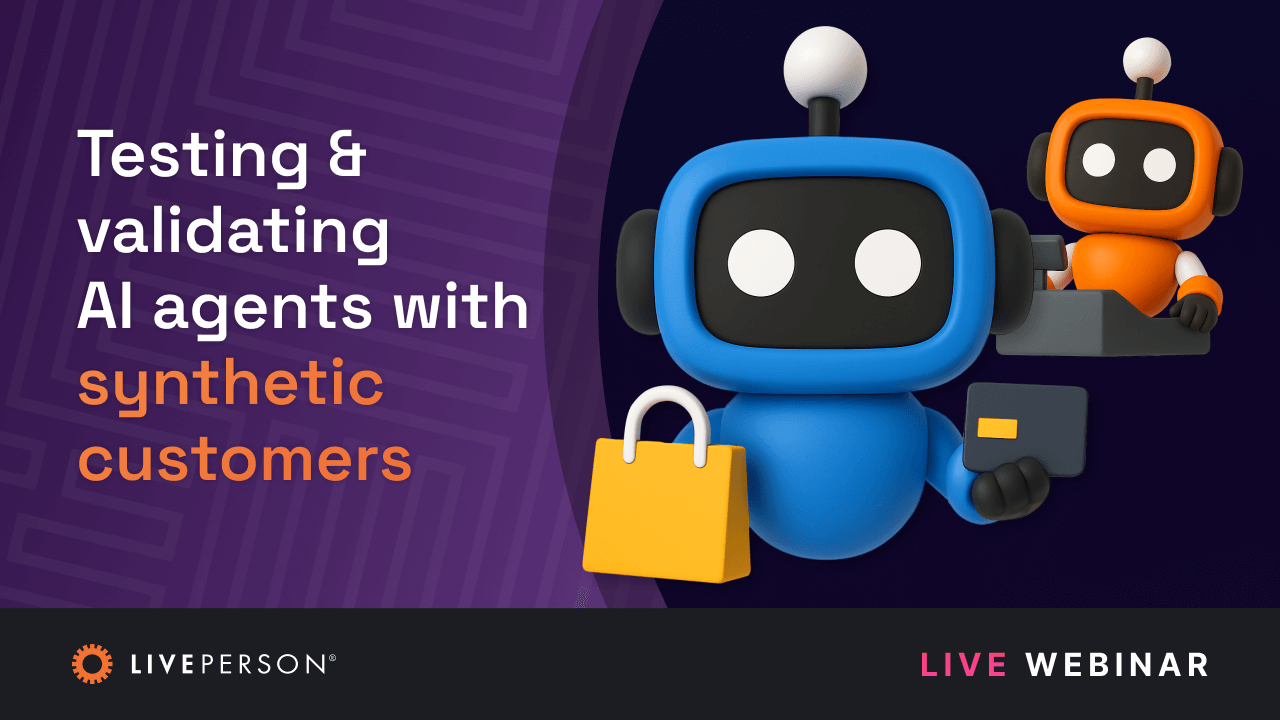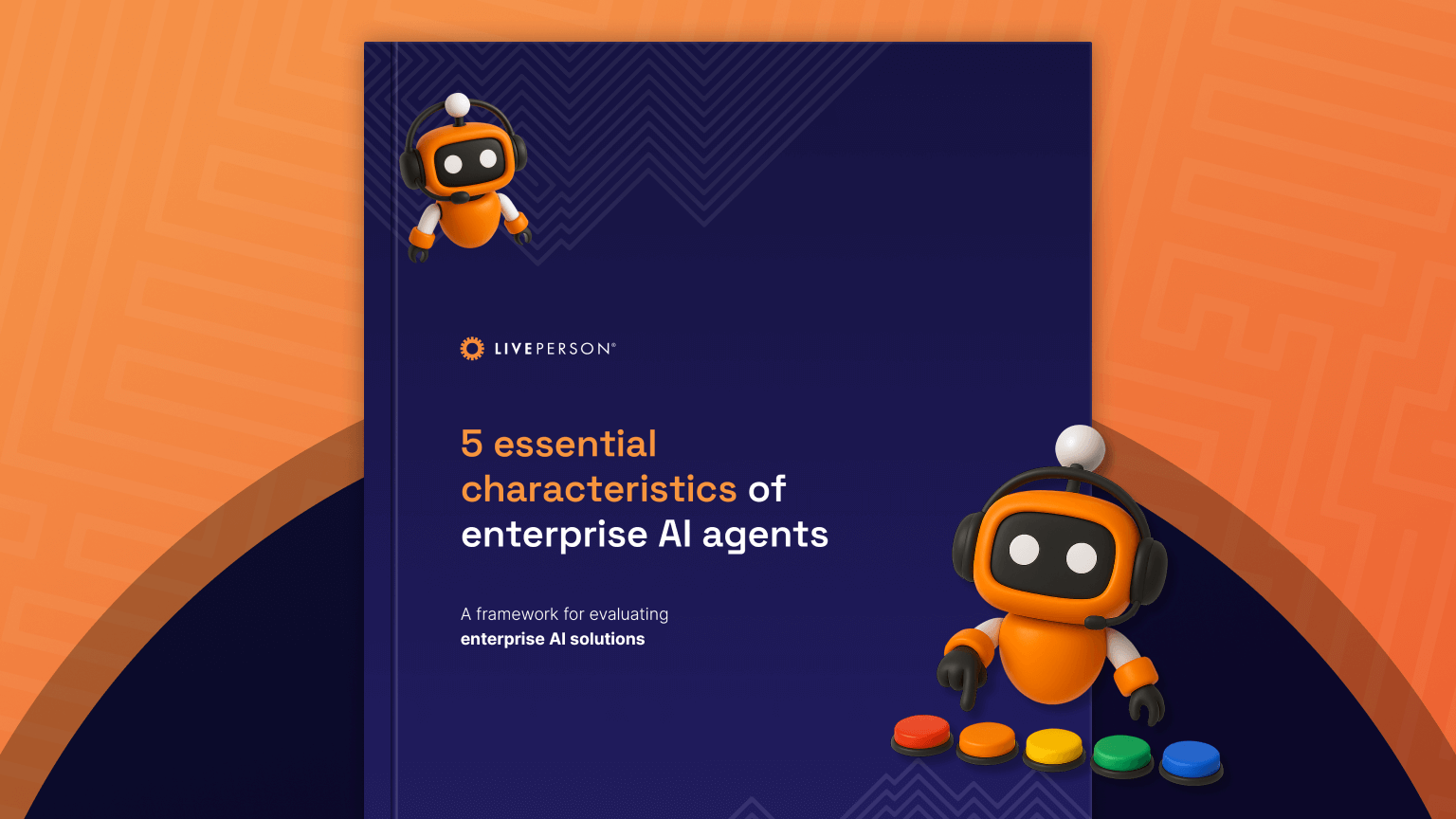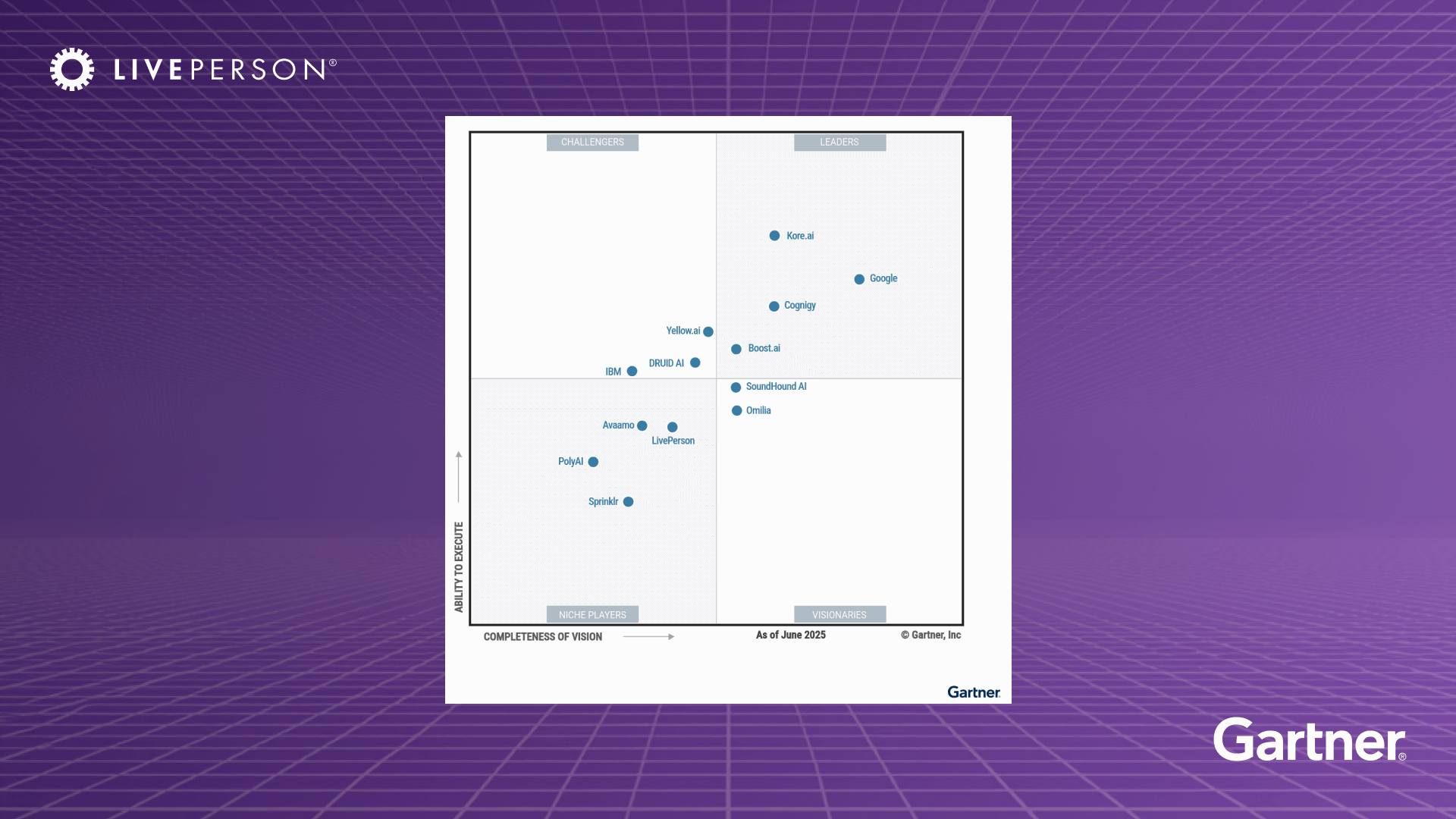article
5 ways conversation analytics helps improve your customer experience
November 21, 2024 • 7 minutes
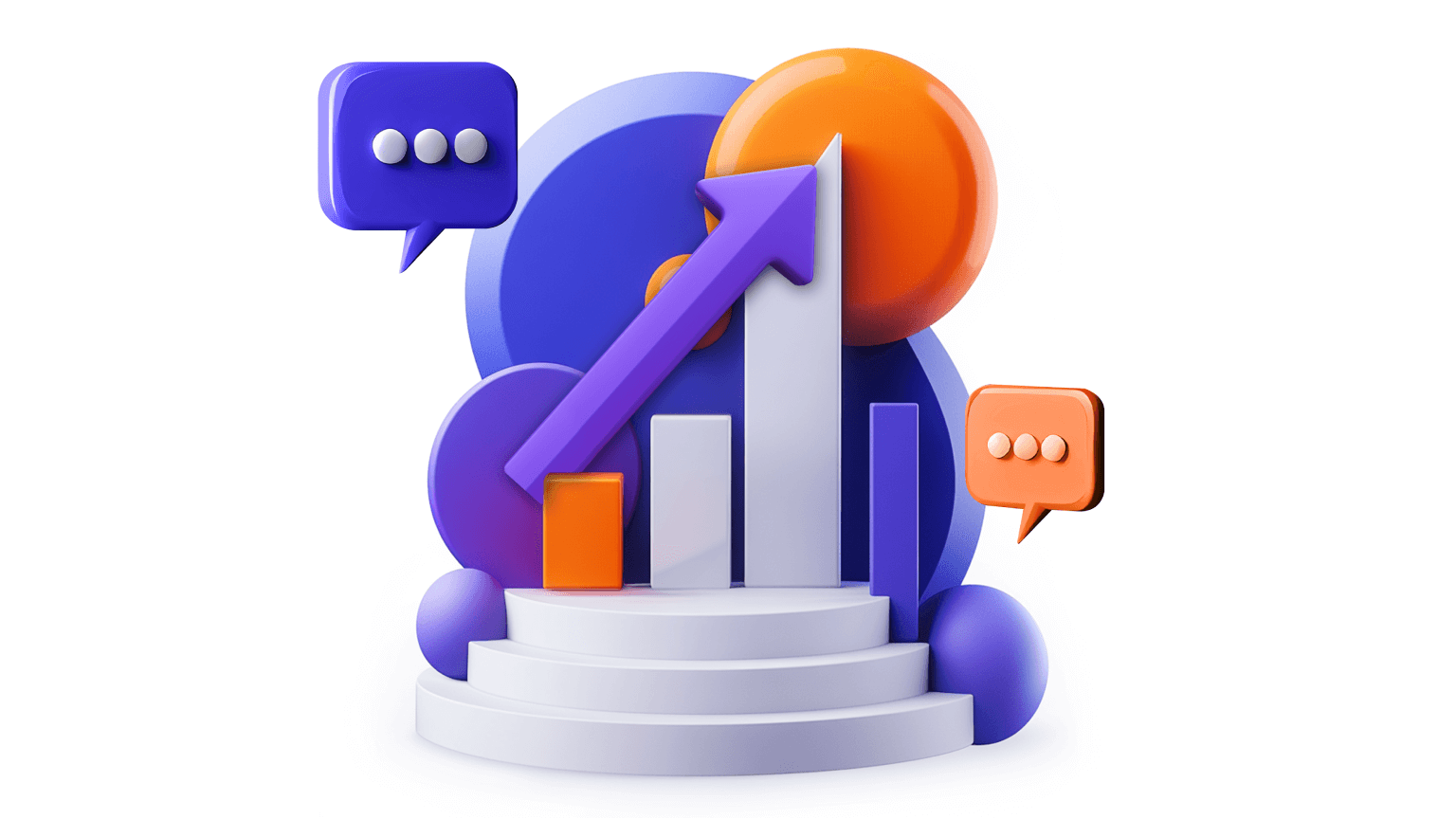
Conversation analytics (often referred to as conversational intelligence) has emerged as a transformative tool for businesses, revolutionizing how companies understand and improve their interactions with customers.
Whether you’re measuring and analyzing sales conversations, support inquiries, or even onboarding calls, conversation analytics can open up new opportunities to gain valuable insights into customer behavior, preferences, and pain points.
Best of all, this technology is beneficial for a wide range of industries, empowering businesses to refine their strategies, improve their product offerings, and personalize their interactions to deliver a better customer experience. Additionally, these insights can also highlight ways to improve the agent experience and new operational efficiencies.
Let’s look at five ways to leverage conversation analytics to gain a deeper understanding of your customers’ needs and empower your agents.
1. Improve agent performance and coaching
Conversation analytics can significantly support more targeted and effective agent coaching by equipping managers with the actionable insights they need to provide data-driven feedback.
Instead of reading every single call transcript or listening to every recording from beginning to end, managers and coaches can use conversational analytics tools to identify specific areas where agents excel or might need a little extra help. Not only does this approach save hours every week, it’s also more data-driven and allows for objective and consistent feedback compared to traditional agent coaching methods.
This deep understanding isn’t just helpful for support or service agents — it can also help sales leaders and teams improve their sales pitches, identify key opportunities for upselling or cross-selling, and increase conversion rates.
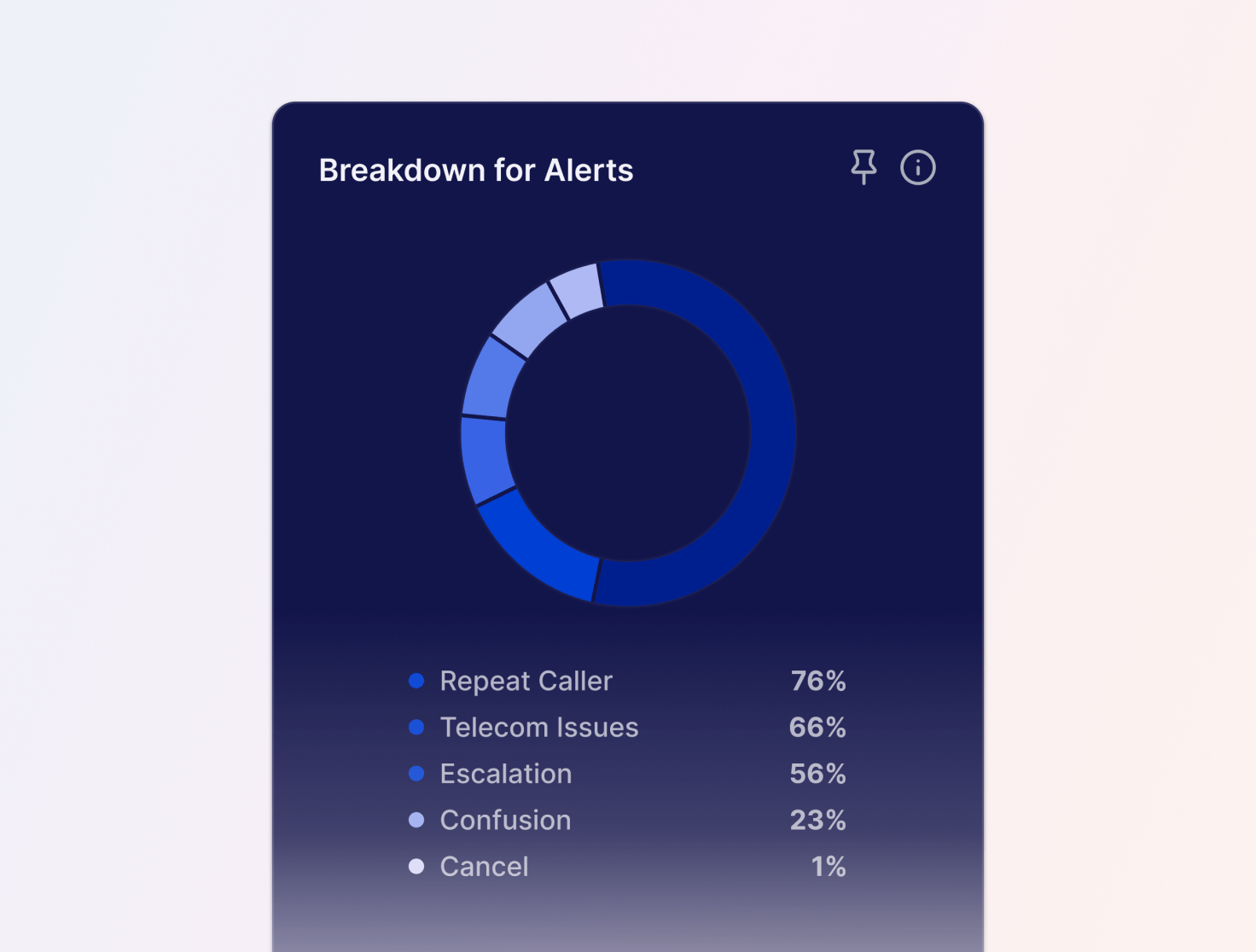
For example, an online musical instruments and pro audio equipment retailer in the United States uses conversation analytics to identify common objections from prospects during sales conversations.
LivePerson’s conversational analytics software, Analytics Studio, gives them omnichannel visibility into their conversation data across the entire customer journey, transforming every customer call and message into actionable data for their sales team.
2. Identify consumer trends and new behaviors
Another powerful application of conversation analytics is using it to identify emerging trends and customer behavior — sometimes even before purchase patterns become apparent.
For example, if you’re keeping a close eye on your conversation intelligence tools, you might notice a sudden influx of inquiries about a new product or feature, which you can then act upon swiftly by adjusting your marketing strategy or ramping up support resources.
This is particularly valuable for detecting and addressing potential fraud or misuse. If you suspect bad actors are looking for ways to exploit your system, you can analyze your conversation data to identify patterns — maybe from customers who repeatedly ask for unusually specific information, exhibit suspicious behaviors, or use specific phrases associated with fraud. This can then be used to train your agents or adjust your AI chatbot to reduce the chances of abuse or fraud.
3. Improve operational efficiency
Conversation analytics can also play a crucial role in improving operational efficiency. If companies can understand which times are the most busy or which channels tend to receive the most or least complicated customer inquiries, for example, they can adjust their scheduling to avoid overscheduling or underscheduling agents at peak periods.
A leader in the UK’s energy sector supplies electricity and gas to over 5.7 million residential and business customers. During the 2021 UK energy crisis, they used LivePerson’s Conversational Intelligence suite to analyze customer interactions and identify the specific needs and concerns of affected customers. Thanks to its advanced AI and configurable and intuitive real-time reporting, the company was able to uncover and understand customer intents, all in a single view.
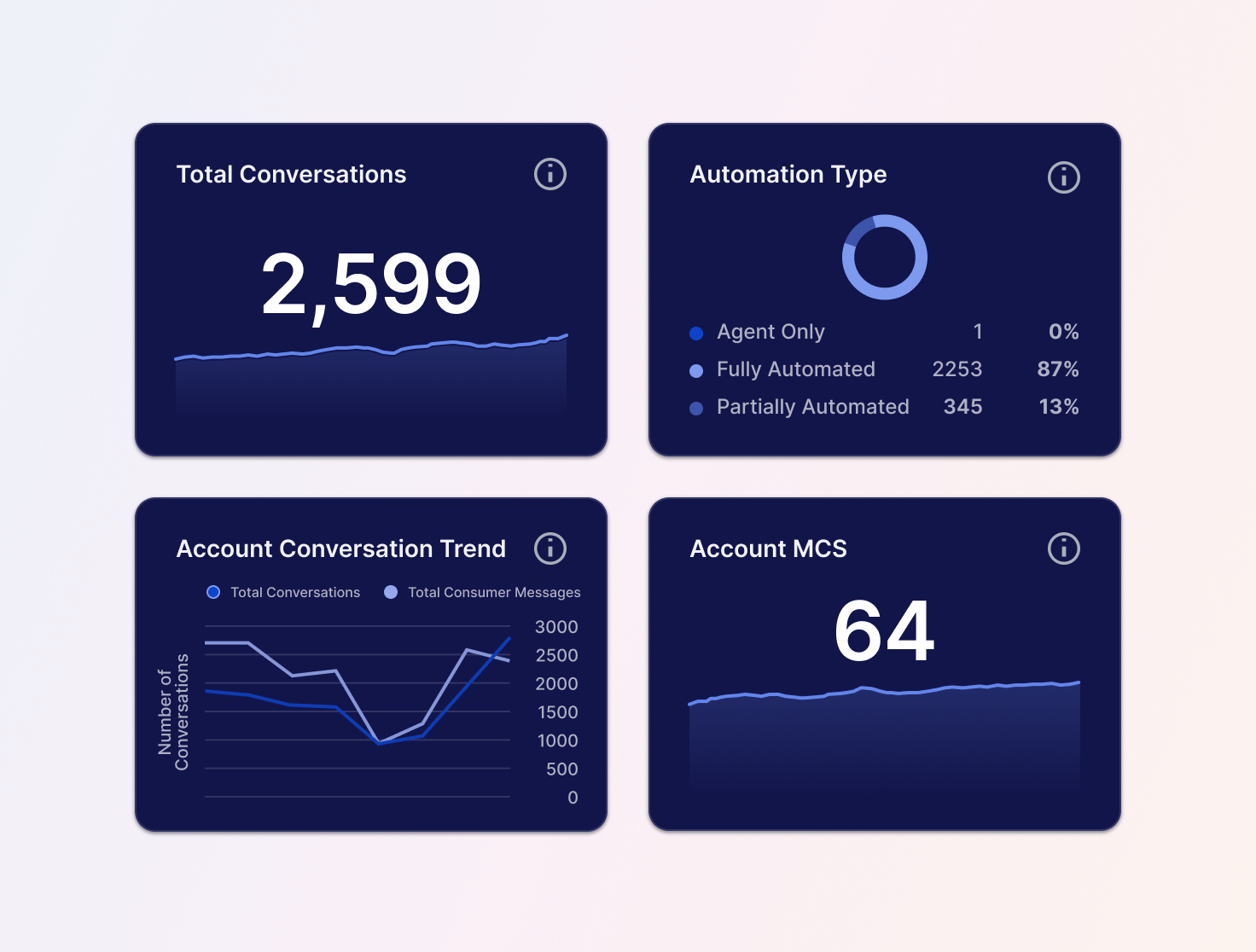
This helped them provide a more agile crisis response, prioritize resources more effectively, and improve their services — for example, by integrating transactional capabilities (like the ability to make a payment) into their messaging channels, which decreased wait times and also reduced agent workload so they could spend more time with customers who actually needed to talk to a person.
4. Find opportunities for automation
For companies that are interested in AI and automation but don’t know where to start, conversation analytics are helpful for quickly uncovering opportunities to automate routine tasks and interactions.
By examining the types of queries and issues customers frequently raise, you can identify which interactions are repetitive and can be streamlined or automated.
For instance, if 60% of your customer conversations involve answering similar questions about account status or service details, these tasks can be automated using AI agents or interactive voice response systems. This not only frees up human agents to handle more complex issues, but also gives your customers faster and more efficient responses to routine queries.
Delta Dental of Washington (DDWA) operates a contact center that answers over 700,000 calls every year. Before they started using conversation analytics, all their call data was kept in spreadsheets, which was extremely inefficient and led to long hold times because agents had to choose call reasons and do other tasks manually. More importantly, it wasn’t easy to organize and extract valuable insights from customer conversations.
So, DDWA looked into conversational analytics tools. Using their prebuilt Tableau dashboard and LivePerson’s Analytics Studio, they were able to see that 12% of phone calls they were receiving from providers were just about claim status.
They were then able to take that data to their internal claims product teams and website team to propose and begin development on an online portal for providers to get status updates without having to call in — and as a result, were on track to reduce their average handle time by 10% company-wide.
5. Continuously work on improving customer service and experience
One of the most significant benefits of conversation analytics is its ability to provide ongoing insights for continuous improvement.
Most companies are talking to customers every day — each one of these conversations holds potentially valuable nuggets of information, whether it’s product feedback, thoughts about key competitors, or emerging trends in customer needs and preferences.
Conversation intelligence software can analyze large volumes of this data and help you quickly pinpoint areas where the customer experience can be improved. If analytics reveal that customers frequently express frustration with certain aspects of the service or product, companies can take proactive steps to address these issues.
This is what The RealReal, the world’s largest and most trusted resource for authenticated luxury resale, did during the COVID-19 pandemic. Despite growing 30 to 40% month over month, the team was overwhelmed and having a hard time keeping up with customer expectations, long call wait times, and a growing backlog of support tickets.
Holly Carroll, VP of Client Services, and her team wanted to understand two key questions:
- Where in the buying or consigning journey were they seeing the most contact?
- Were there certain personas or journey stages that were seeing more friction than others?
With LivePerson’s suite of AI-empowered conversational analytics tools, Holly and her team started analyzing conversations and discovered that:
- Most of the customer contact happened after the drop-off stage.
- With such high-value items, customers wanted reassurance that their pieces were being handled properly.
Based on these customer insights, the team made adjustments to their communications and added automated messages reassuring consignors that they were in great hands. And as items arrived, were authenticated, and got listed on the website, they also made sure to update sellers throughout the entire process. These additional touchpoints reduced friction and improved transparency in the process, which led to a better experience for consignors and built trust and customer satisfaction across their membership.
The result of the new digital customer experiences? A 95% CSAT score on messaging, and wait time of less than a minute on voice channels.
Customer conversation analytics: A wealth of CX insights
Conversation analytics is a powerful tool that unlocks a wealth of opportunities for businesses to improve their customer experience.
From highlighting coaching opportunities for agents, to helping identify customer preferences, conversation analytics platforms like LivePerson’s Conversational Intelligence suite are empowering businesses to improve operational efficiencies while delivering exceptional service.
See how companies leverage LivePerson to make data-driven decisions and drive growth using the conversations they’re having with their customers every day.


